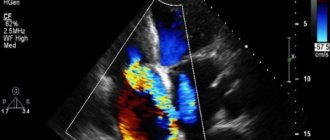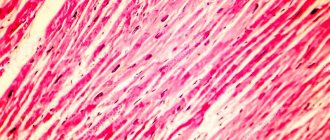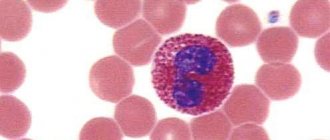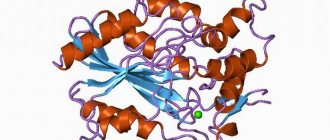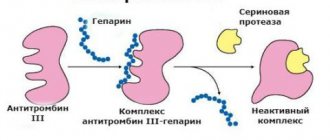What the analysis shows
This study is an important stage in the diagnosis of diseases associated with disorders of the pituitary gland. The analysis can be done in any clinic or laboratory. Modern diagnostic centers have techniques for accurately and quickly determining this hormone in the blood.
A blood test for follicle-stimulating hormone shows its concentration. Changes in the indicator relative to the norm indicate the presence of certain pathologies.
Diagnostics is carried out using chemiluminescent analysis. Results are measured in mIU per milliliter of blood. For the purpose of research, venous blood is taken.
Deviations of FSH from the norm
The reasons for the violation of the level of the substance are different. They are associated not only with pituitary dysfunction.
Pathological reasons for deviation of FSH from normal:
- pituitary adenoma;
- hypopituitarism;
- hyperprolactinemia;
- obesity;
- anorexia nervosa;
- polycystic ovary syndrome;
- endometriosis;
- neoplasms in the adrenal glands;
- chronic and acute renal failure;
- testicular malignancy;
- absence of testicle.
The results of FSH analysis are informative in diagnosing diseases of the genital organs and identifying the causes of female and male infertility. prescribe a laboratory blood test for hormones and interpret the data obtained . He gives recommendations on when and how to get tested for FSH.
What is FSH
Many people are interested in what it is – FSH. It is produced in certain areas of the pituitary gland. Its production occurs in impulses. The total level of FSH is correlated with the amount of sex hormones.
In children, the amount of the test substance increases immediately after birth and decreases over several months. Before puberty and the appearance of secondary sexual characteristics, its quantity increases again. This contributes to a response increase in the activity of sex hormones.
In women, this substance significantly accelerates the development of follicles. In men, it affects the functions of the spermatic cords, increases testosterone production, and stimulates the formation of seminal fluid.
Indications for taking an FSH test
If you suspect disorders of the reproductive system, it is necessary to determine the level of hormones in the blood, including a blood test. This study is used to identify the causes of infertility, diagnose spermatogenesis disorders, and determine primary and secondary sexual dysfunction. FSH analysis also helps determine the phase of the menstrual cycle, register early or late puberty and monitor hormonal therapy.
Indications for taking a hormone test are:
- Decreased libido
- Potency disorders in men
- Suspicion of pituitary pathology
- Amenorrhea
- Menstrual irregularities
- Lack of ovulation
- Uterine bleeding
- Delayed growth and puberty
- Miscarriage
- Infertility in men and women
- Preparation for the IVF protocol
When is it appointed?
The study of FSH levels is carried out for the purpose of:
- determining the causes of female or male infertility;
- establishing the phase of the cycle;
- diagnostics of factors of spermatogenesis disorders;
- determining the causes of genital dysfunction;
- establishing factors of too early or late sexual development;
- monitoring the effectiveness of hormonal treatment;
- determination of etiological factors of pituitary gland pathologies;
- diagnosis of congenital chromosomal abnormalities;
- studying the causes of deviations in the growth of adolescents.
How to prepare for the examination
Preparing for a hormone test is important to get accurate results. Before conducting the examination, it is important to follow some rules.
How to donate blood correctly:
- do not eat food for 8 hours before taking it;
- You can only drink still water;
- 2 days before the analysis, after the permission of the therapist, you should stop taking hormonal medications;
- eliminate factors of mental and physical stress per day;
- 3 hours before the examination do not smoke;
- Do not drink alcohol the day before the test.
When is the best time to donate blood?
Women are advised to undergo analysis on the second or third day of the menstrual cycle, when hormone values are recorded. For men, the day the level of this substance is determined does not matter.
It is better to donate blood in the morning on an empty stomach.
How is the examination carried out?
The collection of biomaterial from a vein follows the same principle as during biochemical analysis. Before a hormonal blood test, a woman must tell the doctor the day of her cycle, the duration of her pregnancy, the names of the medications she is taking, and indicate any history of surgical operations.
The analysis is deciphered directly in the laboratory.
Standards for men and women
The concentration of this hormone in the blood of women varies within the cycle:
- within 2–5 days, the amount of the hormone fluctuates between 3.5–12.5 mIU per ml;
- until day 14, its level is the same as in the previous period of the cycle;
- during ovulation, the normal value is 4.7–21.5 mIU;
- in the luteal phase the level ranges from 1.2 to 9 mIU per cm3 of blood;
- during menopause, the indicator in question increases and stops at 25 to 100 mIU;
- During pregnancy, FSH should always be low.
In men, natural values range from 1.38 to 13.6 mIU per milliliter of blood. They do not change throughout life.
In boys under 1 year of age, the FSH norm is 3.5 mIU. Further up to 5 years, it decreases to 1.5 mIU; in adolescents, its amount increases to 6.3 units.
In girls under 1 year of age, the hormone level is up to 20.3 mIU, then it decreases to 6.1 by the age of 5. Before menarche, the analyzed indicator does not exceed 8.8 mIU per milliliter of blood.
Role of FSH
In a woman’s body, this hormone is responsible for the normal maturation of the ovaries and the follicular phase of the cycle. FSH is inextricably linked with luteinizing hormone (LH) and promotes the production of estradiol. It is thanks to him that testosterone turns into estradiol.
The highest concentration of FSH in the blood contributes to the rupture of the follicle and the release of the egg.
In the female body, the total FSH level should be lower than the luteinizing level. Deviation of hormonal levels from the norm causes cycle disorders.
In men, follicle-stimulating hormone regulates the development and normal functioning of the testicles and seminiferous tubules. Thanks to it, the growth of germ cells and the distribution of testosterone are regulated. The more testosterone in the blood, the lower the FSH level in the body, and vice versa.
Reasons for deviations
The causes of hormone fluctuations relative to the norm are persistent disorders of the hypothalamic-pituitary system.
Factors that reduce FSH levels in the body:
- hyperprolactinemia;
- polycystic ovary syndrome;
- obesity;
- pathology of the pituitary gland;
- taking hormonal medications.
The reasons for the increase in FSH indicator are:
- underdevelopment of the ovaries;
- tumors of the anterior pituitary gland;
- pathologies of the hypothalamus;
- increasing testosterone levels.
What do deviations mean?
FSH increases in the following cases:
- menopause;
- ovarian failure with dyskinesia or wasting syndrome, Swire and Shereshevsky-Turner syndrome;
- testicular failure in men;
- hypogonadism caused by the influence of X-rays, chemotherapy, some infectious and autoimmune pathologies;
- tumors in the pituitary gland;
- feminization of testicular genesis;
- lung tumors;
- early puberty;
- alcoholism.
The role of normal hormone values
In women, this biologically active substance is important for maintaining the menstrual cycle. Without it, ovulation is impossible.
The presence of FSH within the normal range is the most important condition for maintaining a woman’s fertility.
For men, this indicator is also important. It is responsible for the formation of sperm and libido.
Any disturbances in its concentration in men negatively affect fertility and potency. The opinion that its role for men is small is wrong.
What to do if a high or low value is detected
If the hormone level decreases or increases, it is recommended to do an ultrasound of the genital organs, and, if necessary, magnetic resonance or computed tomography. These examinations help to identify the true cause of the deviation in the amount of follicle-stimulating hormone.
If the level is high, replacement therapy is prescribed. The choice of drug is made depending on how much the value has increased or decreased. If there is a decrease, drugs are prescribed that increase the amount of FSH.
Blood tests for this parameter are important for the diagnosis and treatment of a large number of serious diseases. Patients should not ignore this examination.
The ability to conceive is affected by the concentration of the hormones FSH and LH in the blood. At the same time, you need to understand that these hormones are synthesized in both the female and male body, and in case of deviation from the norm, not only infertility, but also some other deviations can occur. But what are FSH and LH? How do these hormones affect a person's life? And what does the normal ratio of LH and FSH look like? These issues will be discussed below.
Treatment
To diagnose the disease, an ultrasound of the genital organs is performed, and, if necessary, CT or MRI. After a series of examinations, treatment is prescribed. If FSH levels are high, hormone replacement therapy is prescribed. Taking into account how much the concentration deviates from the norm, the dosage of the hormonal drug is selected. The dose is increased gradually.
When the concentration of hormones decreases, treatment is carried out, which involves taking medications that increase FSH.
It is possible to eliminate the problem and normalize the level of follicle-stimulating hormone, but it is important to follow all the doctor’s recommendations and take prescribed hormonal medications.
Read: Prolactin test - when to take it and the functions of the hormone in the sexual sphere
What is FSH?
Follicle stimulating hormone (FSH) is a sex hormone that plays an important role in human sexuality. FSH is synthesized in the pituitary gland, and the synthesis of a new portion of the hormone occurs every 2-3 hours. After synthesis, the hormone immediately enters the blood, and the amount of FSH increases sharply, but after 15-20 minutes the concentration of this substance in the body returns to normal. FSH is synthesized in the pituitary gland under the influence of other hormones, so the presence of hidden disorders can be determined by the amount of FSH in the body.
FSH is produced in both female and male bodies, however, in sexually mature men the concentration of this hormone is constant, but in women the amount of FSH directly depends on the phase of the menstrual cycle. After birth, the concentration of FSH increases sharply in both boys and girls, but after 6-12 months the amount of FSH sharply decreases. The FSH level increases again during puberty, and after puberty the amount of FSH stabilizes within certain limits (in men the amount of the hormone is constant, in women it depends on the stage of the menstrual cycle).
FSH is one of the most important hormones that regulates the menstrual cycle, since it is under the influence of FSH that follicles mature in the ovary. The mechanism of influence is as follows:
- At the early stage of menstruation, FSH stimulates follicle growth. This hormone also improves the synthesis of another hormone called estradiol - this substance also takes part in hormonal regulation of the body.
- Somewhere in the middle of the menstrual cycle, FSH, together with luteinizing hormone (LH), provokes rupture of the follicle, which is normal during ovulation, and as a result of rupture of the follicle, an egg is formed that is capable of fertilization.
- After the release of the egg, FSH switches to stimulating progesterone synthesis. Progesterone is a key hormone in the female body that performs many functions. If the body synthesizes insufficient amounts of progesterone, then the menstrual cycle is disrupted (although eggs still continue to be produced). If the body contains a reduced amount of progesterone, and at this time fertilization of the egg occurs, then there is a high probability that the egg will not go through the implantation stage, which will lead to the death of the egg. Therefore, we can say that FSH affects the ability to conceive, and a lack of this hormone can lead to infertility.
FSH also plays a major role in hormonal metabolism in the male body:
- If a man's body contains the optimal amount of FSH at an early stage of life, then the spermatic cords will grow and develop normally. If there is a deficiency of this substance, the cords will develop very slowly, which can lead to the development of infertility.
- In older age, FSH is responsible for the synthesis of testosterone. This substance is the main male hormone; Testosterone has many functions - the formation of sperm, regulation of behavior, muscle growth, and so on.
- In adulthood, FSH also directly affects sperm synthesis in the testes; if this substance is not enough, then in this case only a small number of weak sperm are formed, which are practically unable to fertilize the egg, therefore FSH in adulthood also affects the male ability to conceive
If there is a suspicion of infertility, then the doctor may prescribe a test to determine the concentration of FSH in the blood. For the analysis, you need to take blood from a vein, and deciphering the results usually takes 2-3 days.
The table of normal FSH values is as follows:
Decoding the results of the FSH analysis
After the analysis is completed, the results are studied.
It allows you to understand how severely hormonal regulation is disrupted.
An increased level of FSH indicates a primary pathology of the gonads, and a decrease indicates a secondary pathology caused by impaired function of the pituitary gland or hypothalamus.
To make a diagnosis of infertility and prescribe adequate therapy, you should take a test not only for FSH, but also for LH.
As mentioned earlier, the level of FSH in the female body is not stable: different values are normal for different phases of the menstrual cycle.
If in the follicular phase the hormone norm is 1.3-9.9 mIU/ml or more, then in the ovulatory phase it varies between 6.16-17.2 and more, and in the luteal phase - from 1.1 to 9.2 and more.
As for men, their FSH levels change with age:
- for babies in the first year of life, a value of 3.5 mU/l and above is considered normal;
- in children one to five years old - more than 1.45 mU/l;
- for boys from six to ten years old - from 3.03 mU/l or more;
- in adolescents 11-14 years old, the FSH level decreases and amounts to 0.35-6.3 mU/l;
- upon reaching 15-20 years of age, the level increases slightly to 0.5-9.98 mU/l;
- for adult men, values in the range of 0.95-12 mU/l are considered normal.
Did you know that there is a hormone that is responsible for the number of eggs capable of fertilization? AMH is the norm in women and possible deviations.
You can find out about the causes of hypercortisolism by following this link.
What is LH?
Luteinizing hormone (LH) is another important hormone that also affects the functioning of the human hormonal system. This substance takes part in the synthesis of estrogen (in women) and progesterone (in men). Estrogen and progesterone perform many functions in the body in women and men, and in case of a lack of these hormones, the following diseases may appear - infertility, menstrual irregularities, sexual pathologies, and so on.
LH also performs the following functions:
- In the female body. In women, LH is produced approximately on days 12-14 of the menstrual cycle. When a certain level is reached, a special mechanism is triggered in the female body, which leads to the formation of an egg from the follicle, therefore the synthesis of LH affects the ability to conceive in women. In the event of pregnancy, LH stimulates the synthesis of the outer membrane of the fertilized egg; if the body synthesizes LH, then the fertilized egg dies and is washed out of the body, and the woman becomes infertile.
- In the male body. In men, LH takes part in the synthesis of testosterone. If LH is synthesized in insufficient quantities, then male sperm will be very sluggish, and their total number will be small. Because of this, the ability to conceive is seriously reduced, which leads to partial or complete infertility in men (the ability to conceive is preserved, but it becomes more difficult for sperm to fertilize the egg).
If there is a suspicion that the body synthesizes an insufficient amount of LH, then the doctor may prescribe a test to determine the concentration of LH. For analysis, the doctor must take blood from a vein, and if the diagnosis is confirmed, the doctor must draw up a treatment plan. The main treatment for LH deficiency is taking hormones; At the same time, you need to understand that only special drugs can restore LH levels, and self-medication is ineffective and even dangerous. The LH level table looks like this:
Gender or stage of the menstrual cycle
| FSH concentration (units: mIU/ml) | |
| Puberty men | 1,5 — 8,5 |
| Days 1 - 14 of the menstrual cycle | 2,5 — 12,5 |
| 14 - 16 days of the menstrual cycle | 15 — 95 |
| 16 - 28 days of the menstrual cycle | 2 — 7,5 |
Tests for ovarian hormones
The ovaries produce estrogens, progesterone, anti-Mullerian hormone and “weak” androgens. All these hormonal substances in one way or another take part in controlling the processes occurring in the female reproductive system. Based on the level of these hormones, the gynecologist can judge the state of the patient’s reproductive health and identify abnormalities.
Estrogen analysis: how to take it, explanation
Estrogens are the leading female hormones, thanks to which secondary sexual characteristics characteristic of women are formed. In adulthood, estrogens are responsible for no less important processes, without which it would be impossible to conceive a child. Under the influence of these hormones, regular cyclical changes occur in the vagina, cervix and uterus itself, as a result of which sperm can penetrate into the uterine cavity, sperm can fertilize the egg, and the fertilized egg can in the future penetrate the endometrium.
Due to their biological properties, estrogens protect the fair sex from wrinkles, osteoporosis, cardiac and vascular diseases. Therefore, with age, when the body begins to produce significantly less sex hormones, women’s skin becomes loose, blood pressure “jumps,” and other, previously unknown, health problems appear.
Three estrogens are synthesized in the human body, but only two are biologically active - estradiol and estrone, their concentration in the blood is determined during the analysis . The activity of estrogen synthesis (mostly estradiol) by the ovaries is not constant - it changes dramatically throughout the menstrual cycle, reaching peaks shortly before ovulation and in the middle of the corpus luteum phase.
The need to test a woman’s blood for estrogen levels arises in the following situations:
- for various menstrual disorders;
- for vaginal bleeding of a non-menstrual nature;
- for infertility;
- when symptoms of menopause appear (lack of menstruation, anxiety, hot flashes, etc.).
Depending on the clinical situation, the gynecologist may prescribe only a test for estradiol (designated as E2) or a comprehensive study for estradiol (E2) and estrone (E1). For example, to diagnose menopause, the ratio between the level of estradiol (its concentration drops significantly after menopause) and estrone (its level practically does not change) is determined.
How to get tested for estrogen
It is advisable to donate blood for estrogen on certain days of the menstrual cycle (usually 6-7), the effectiveness of the study will depend on this. Preparation for the analysis involves limiting physical activity for 24 hours, as well as giving up alcohol and smoking. Blood sampling is carried out in the morning; the patient should not have breakfast beforehand.
Important
Medicines can affect the synthesis of hormones, so you should definitely tell your gynecologist about the medications you are taking. Your doctor may recommend stopping treatment before the test.
Decoding the result of an estrogen test
Elevated estrogen levels are found in women with the following pathological conditions:
- Follicle persistence. In this disorder, the follicle does not burst, but persists and continues to produce estrogens.
- Hormonally active ovarian cysts and tumors.
- Liver cirrhosis (estrogens metabolism is impaired).
- Obesity (adipose tissue acts as a storage facility for hormones, preventing them from being excreted from the body).
A decrease in the concentration of estrogen in a woman’s blood is observed when:
- Hyperprolactinemia (overproduction of prolactin).
- Shereshevsky-Turner syndrome.
- Virile syndrome. With this pathology, women become similar to men in appearance due to hormonal imbalance.
- Hypogonadism (functional inferiority of the gonads).
- Chronic inflammation of the uterine appendages.
- Intense physical activity.
- Dramatic weight loss.
Progesterone test: how to take it, explanation
Progesterone is an ovarian hormone that is extremely important for maintaining pregnancy if it occurs. Under the influence of this hormone, the following processes occur:
- the endometrium is transformed, which allows the fertilized egg to latch on and receive everything it needs for further development;
- the wall of the uterus relaxes;
- immunity decreases.
During menstruation and before ovulation, progesterone levels remain minimal (basal). Before the release of the egg, the ovaries begin to release the hormone into the blood more intensely in order to prepare the “soil” for the fertilized egg. Further, if pregnancy does not occur, progesterone levels drop to baseline, and menstruation begins. During pregnancy, progesterone first forms the corpus luteum, and in the second and third trimester - the placenta. If this hormone is not enough, various pregnancy complications occur.
Indications for a blood test for progesterone:
- infertility;
- uterine bleeding;
- detection of space-occupying formations in the ovaries;
- menstrual disorders;
- the need to assess the condition of the placenta;
- risk of miscarriage.
How to take a progesterone test
This test should be taken in the second half of the cycle (on days 22-23), unless the gynecologist gives other recommendations. During pregnancy, you can check your progesterone levels any day. It is necessary to come to the laboratory on an empty stomach. The concentration of progesterone in the blood changes under the influence of certain medications (they may be prescribed by other doctors), so the treating gynecologist must know everything that his patient is taking.
Decoding the result
In non-pregnant women, elevated levels of progesterone can be found with amenorrhea and irregular uterine bleeding, as well as with renal failure, when the excretion of the hormone is impaired. If the concentration of progesterone exceeds normal values in the expectant mother, it means that there is a malfunction in the functioning of the placenta.
A significant decrease in the level of progesterone in the blood in non-pregnant women is typical for:
- persistent follicle;
- cycles without ovulation and dysfunctional uterine bleeding;
- chronic inflammation of the appendages, which leads to their hypofunction;
- various forms of amenorrhea.
In pregnant women, a reduced concentration of progesterone is considered a sign of:
- threat of miscarriage associated with endocrine disorders and requiring appropriate hormonal correction;
- placental insufficiency;
- fetal development delays;
- true post-term pregnancy.
We recommend reading: Progesterone during pregnancy: norms and signs of deviation from the norm
Anti-Mullerian hormone (AMH) test: how to take it, explanation
Anti-Mullerian hormone is the most important factor in sex differentiation in the embryo. If after birth it is not possible to determine the exact gender of the child, the detection of AMH in the blood suggests that the newborn is a boy, since this substance is not synthesized in utero in girls. In adulthood, analysis for AMH is of greater clinical importance for women, since it is produced by special cells of the follicle walls in the ovaries and reflects the ovarian reserve, that is, the reproductive capabilities of the body.
Thus, analysis for AMH in women makes it possible:
- identify the cause of infertility;
- choose the right treatment method (if the ovarian reserve has depleted, it is recommended to use another woman’s egg) and a program for managing an infertile couple;
- predict the onset of menopause;
- suspect granulosa cell ovarian cancer (in combination with other tumor markers), and also monitor the condition of patients treated for this disease.
How to get tested for AMH
The activity of AMH secretion by the ovaries is the same throughout the entire cycle, so you can take the test on any day. Preparation for the study should be the same as for other studies that require blood sampling from a vein. You should consult your gynecologist for more details about the specifics of taking an AMH test.
Decoding the result
An increase in AMH concentration in women is found in granulosa cell carcinoma and polycystic ovary syndrome. A sharp jump in AMH levels in menopausal patients is considered especially unfavorable. Deviation of the studied indicator beyond the lower limit of the norm is typical for delayed puberty (if a young girl is being examined), as well as for a decrease in ovarian reserve, the onset of menopause or its imminent onset.
Androgen test: how to take it, explanation
Androgens are the leading sex hormones in men; in women they are synthesized in small quantities and mainly in an inactive form. When the permissible concentration of androgens is exceeded in the female body, serious pathological changes occur, so this analysis is of clinical importance for the fairer sex.
The main androgenic hormone is testosterone. The need to determine its concentration in women arises in the following cases:
- if there are signs of hyperandrogenism – hair growth, like a man’s, acne, etc.;
- for menstrual irregularities, infertility;
- with baldness;
- upon detection of space-occupying formations in the area of the ovaries and adrenal glands.
How to get tested
It is advisable for women to take this test on days 6-7 of the menstrual cycle. For examination, venous blood is taken, and you must come to the laboratory on an empty stomach. You should not smoke, drink alcohol, or be physically or emotionally overexerted before taking the test. The medications taken may affect the outcome of the study - this must be taken into account.
Decoding the analysis result
A significant increase in testosterone concentration in women occurs with the following diseases:
- Itsenko-Cushing's disease;
- polycystic gonads;
- androgen-producing tumors;
- adrenogenital syndrome (pathology of the adrenal glands).
Important
All of the above tests do not make it possible to make an accurate diagnosis. Based on the results obtained, you can only determine in which direction to move further. Therefore, if the analysis showed any deviations from the norm, there is no need to immediately panic and diagnose yourself with terrible diseases. A doctor must interpret the results.
Zubkova Olga Sergeevna, medical observer, epidemiologist
8, total, today
( 58 votes, average: 4.14 out of 5)
Spirometry, spirography: what is it, the norm and explanation
Tests for STDs in men: list, deadlines, preparation
Related Posts
The ratio of FSH and LH is normal
The hormones FSH and LH are synthesized by the pituitary gland, and they perform similar functions in the human body. Therefore, during a blood test, the doctor usually determines both the FSH concentration and the LH concentration, which can improve the quality of diagnosis. After determining the absolute concentration, the doctor can calculate the ratio of LH to FSH. Normally, in both men and women, the ratio of LH to FSH should be from 0.5 to 2.5 to 1.
If the results show a significant deviation from the norm, then the doctor should conduct additional research, since a deviation from the norm may indicate the presence of various diseases:
- If the ratio of LH to FSH is more than 2.5 to 1. This usually occurs in case of dysfunction of the ovaries. The main diseases are dysfunction of the pituitary gland (cancer, infectious diseases, etc.), ovarian wasting syndrome, and ovarian cancer. Also, a significant deviation from the norm in a larger direction can occur in the case of obesity, since in this case the normal functioning of the hormonal system is disrupted. Please note that all of the above diseases are quite different in origin from each other, so the doctor must conduct additional examinations to make a differentiated diagnosis.
- If the ratio of LH to FSH is less than 0.5 to 1. This disorder usually occurs due to pituitary cancer, since in this case the normal functioning of this organ is disrupted, which leads to a disruption in the synthesis of all substances needed by the body. Also, a deviation from the norm to a lesser extent is observed in diabetes, obesity and some infectious diseases. Note that lack of LH reduces fertility in both women and men, so the FSH to LH ratio helps determine fertility.
To determine the concentration of LH to FSH, the doctor must take blood from a vein for analysis. Please note that in most cases, the doctor determines both the FSH and LH levels by default, so there is no need to pay additional money for an in-depth analysis.
When to take FSH
Follicle-stimulating hormone is an indispensable assistant in the process of ovarian growth and estrogen production. The gynecologist determines when to take the FSH hormone (and usually LH in tandem with it) in case of disturbances in the functioning of hormones, depending on the day of the female cycle.
Signals about when to take an FSH test
The very first sign of disruption of the hormones FSH and LH is the determination of their ratio. Ideally, it should be 1.5-2 times the difference between the indicators. If the difference is greater or less, this indicates various abnormalities in the body. In men, this may be due to genital surgery or abnormal testosterone secretion. ensuring sperm growth. In women, this can be a sign of various diseases.
Disturbances in hormone synthesis cause:
When should you take follicle-stimulating hormone by day?
On what day is it customary to take FSH? Typically, the maximum level of the hormone is observed in the middle of the cycle. Based on this, the doctor prescribes when to donate blood for the FSH hormone, focusing on the patient’s cycle, on days 3-7. This discrepancy occurs due to the extent and severity of the disease. If there are no diseases, but there is inhibition of follicle development, then the test takes place on days 5-8.
FSH - how to take it correctly?
In order for the test result to be as reliable as possible, when donating blood for FSH, you need to adhere to some rules:
- Do not drink alcohol or eat heavy food the day before the test.
- Donate blood in the morning on an empty stomach.
- Women must take it on certain days of their menstrual cycle, and men - on any day convenient for them.
← Click “Like” and follow us on Facebook
All women concerned about their health must undergo mandatory medical examinations at least once a year. One of the points of visiting a gynecologist is taking blood tests for hormones. In particular, they check the content of a hormone such as FSH in the body.
Every woman periodically needs to undergo tests such as LH and FSH
Their ratio is very important, since the doctor can determine the state of the patient’s hormonal health. This is even more informative than the absolute levels of these hormones in the blood
Prolactin is a hormone responsible for lactation in women, but not only. Men also have it, and its excess may indicate serious diseases. For what symptoms is it recommended to be tested for prolactinemia?
Blood for analysis of female hormones is usually donated on certain days of the cycle. The reliability and information content of the result depends on this. In the case of prolactin, this rule does not play a role.
Functions
Follicle-stimulating hormone plays an important role in the functioning of the human reproductive system:
- In women, it simultaneously with luteinizing hormone (LH) controls the development and functioning of ovarian follicles. During ovulation, the largest amount of the hormone is produced, and then its level decreases.
- In the male body, FSH is responsible for the growth of testosterone in the blood, activates the development of seminiferous tubules and testes, and the maturation of sperm.
In addition to the crucial role in the reproductive function that follitropin plays, it also has the properties of converting excess testosterone into estrogen hormones and preventing hormonal imbalances in women and hormonal imbalances in men.
FSH is released into the blood in pulses at intervals of 1-4 hours. During injection, which lasts 15-20 minutes, the concentration of the hormone exceeds the norm by 1.5-2 times.
When is an FSH blood test prescribed?
Traditional medicine has been using FST blood test data for many years to treat disorders in the reproductive system.
Indications for the study are the presence of the patient:
- Infertility.
- Oligomenorrhea or amenorrhea.
- A woman's inability to carry a pregnancy to term.
- Deviations in sexual development (very early or, conversely, too late).
- Anovulation.
- Endometriosis.
- Uterine bleeding, the etiology of which is not determined.
- Decreased potency.
- Polycystic ovary syndrome.
- Sudden loss or, conversely, increase in body weight.
An FSH blood test may also be prescribed after hormone therapy to monitor its effectiveness.
Preparation and carrying out the procedure
In order to obtain reliable results of the amount of the hormone in the body, you need to know how to correctly take FSH tests.
It is recommended to adhere to the following recommendations:
- A blood test for FSH in women of reproductive age is carried out on days 5-7 of the ovulatory cycle. At the discretion of the doctor, these dates may be changed.
- A week before donating blood, limit physical activity, and the day before donating blood, eliminate it altogether.
- For 3 days before the analysis, follow a daily routine with full sleep and avoid psycho-emotional overload.
- Avoid drinking alcoholic beverages for 2-3 days.
- Stop taking hormonal medications 2 days in advance (by agreement with your doctor).
- Stop smoking 1-2 hours before blood sampling.
- Like other hormone tests in women, FSH is taken on an empty stomach.
Sometimes additional preparatory procedures may be necessary, as advised by the doctor.
Blood is taken for FSH three times with an interval of 30 minutes. This is called the “three sample method”, which is associated with the pulse release of follitropin into the blood.
Preparing for analysis
In women, the day of the menstrual cycle is of great importance for FSH levels. Unless the doctor recommends otherwise, you should donate blood at the very beginning of the first phase. It is acceptable to carry out analysis from days 2 to 7 of the cycle, but preferably from days 2 to 4.
If a woman has menopause, amenorrhea during reproductive age, or an irregular cycle, the test can be performed on any day.
In men, FSH is determined on any day.
To prepare you need:
- exclude heavy physical activity for 3 days;
- Stop smoking 1 hour before blood sampling.
The test must be taken on an empty stomach (8-14 hours after dinner). The preferred time for blood collection is from 8 to 11 am.
Your doctor may recommend repeat FSH tests. This is usually required at low values of the indicator. When it is necessary to evaluate secretion peaks, blood is donated 3 times after an interval of 30 minutes.
What does FSH analysis show?
Follitropin in the blood of a healthy person has normal levels. It is usually measured in international units per liter.
In women, the norm depends on the phase of the cycle, each of which lasts 10-12 days:
A change in hormone concentration indicates the presence of abnormalities.
In women of reproductive age, an increase occurs in the absence of menstruation or with uterine bleeding.
During menopause, high hormone levels indicate the presence of the following disorders:
- Tumor in the area of the pituitary gland.
- Cyst (endometrioid).
- Effect of X-ray irradiation.
- Ovarian insufficiency.
A decrease in FSH levels is observed with infertility, obesity, scanty periods, lack of ovulation, atrophy of the genital organs and mammary glands.
What other tests for female sex hormones are advisable to take, read the article.
FSH analysis in men is normal when the results are within the range of 1.37-13.58 mU/l.
In men
When FSH levels increase in men, the prerequisites for this may be:
- High concentration of male hormones.
- Malfunctions of the gonads.
- A tumor detected in the pituitary gland.
- Orchitis.
- CRF.
- Long-term use of certain medications.
- Pituitary tumors.
A decrease in FSH may indicate the presence of:
- Changes in sperm count (lack of sperm or even complete absence).
- Impotence.
- Testicular atrophy.
- Deviations in the functioning of the pituitary gland.
Read the article about which tests for sex hormones are most often prescribed for men.
With a low level of FSH, representatives of both sexes often experience a decrease in sexual desire, lack of expression of sexual characteristics, sagging and wrinkling of the skin.
In newborns, the hormone will initially be high and then drop sharply. During puberty, FSH levels rise again. A decrease in the concentration of the hormone during this period may be due to a slowdown in puberty.
general description
Follicle-stimulating hormone (FSH) is a glycoprotein hormone that is produced and stored in the anterior pituitary gland. In the body, FSH regulates the activity of the sex glands: it promotes the formation and maturation of germ cells (eggs and sperm), affects the synthesis of female sex hormones (estrogens). In women, FSH affects follicle formation. Reaching the maximum level of FSH leads to ovulation. In men, FSH stimulates the growth of the seminiferous tubules, increases the level of testosterone in the blood, thereby ensuring the process of sperm maturation and libido. After puberty, FSH levels in men are relatively constant. In children, FSH levels increase briefly after birth and decrease significantly from 6 months of age in boys and at 1–2 years of age in girls. It then rises before the onset of puberty and the development of secondary sexual characteristics. During this period, children experience an increase in FSH concentrations at night.
FSH research is performed for:
- identifying the causes of infertility (together with a test for other sex hormones: luteinizing hormone, testosterone, estradiol, progesterone);
- determining the phase of the menstrual cycle;
- diagnosing the causes of menstrual irregularities;
- diagnosing the causes of spermatogenesis disorders, reduced sperm count;
- identifying primary or secondary causes of sexual dysfunction (pathology of the gonads or hypothalamic-pituitary disorders);
- diagnosis of early or late puberty in children;
- diagnosing menopause;
- monitoring the effectiveness of hormone therapy.
Reasons for increased FSH levels:
menopause - 100%;
- primary ovarian failure (premature ovarian failure syndrome, ovarian dyskinesia syndrome, ovarian tumors and cysts, Shereshevsky-Turner syndrome, Swire syndrome, insufficient production of steroid hormones by the ovaries) - 100%;
- primary testicular failure in men (testicular aplasia or agenesis, Klinefelter syndrome, testicular tumors) - 100%;
- hypogonadism due to exposure of the ovaries or testicles to any external factors (X-ray radiation, chemotherapy, alcohol, infectious diseases, autoimmune diseases, trauma, castration) - 80%;
- pituitary tumors - 80%;
- endometriosis - 80%;
- testicular feminization - 100%;
- hormone-secreting neoplasms (more often with lung tumors) - 70%;
- premature puberty - 80%;
- alcohol dependence - 70%;
- renal failure - 70%.
Reasons for decreased FSH levels:
Kallmann syndrome - congenital secondary hypogonadism - a disorder of impulse secretion of GnRH in the hypothalamus - 100%;
- isolated FSH deficiency - 100%;
- pituitary insufficiency - 100%;
- dwarfism - 100%;
- Sheehan's syndrome - 100%;
- hyperprolactinemia - 100%;
- tumors of the ovaries, testicles and adrenal glands with increased secretion of estrogens and androgens - 100%;
- polycystic ovary syndrome - 100%;
- hemochromatosis - 80%;
- anorexia and starvation - 80%;
- obesity - 80%.
Simultaneous tests for follicle-stimulating and luteinizing hormones are used to diagnose male and female infertility and determine treatment tactics.


